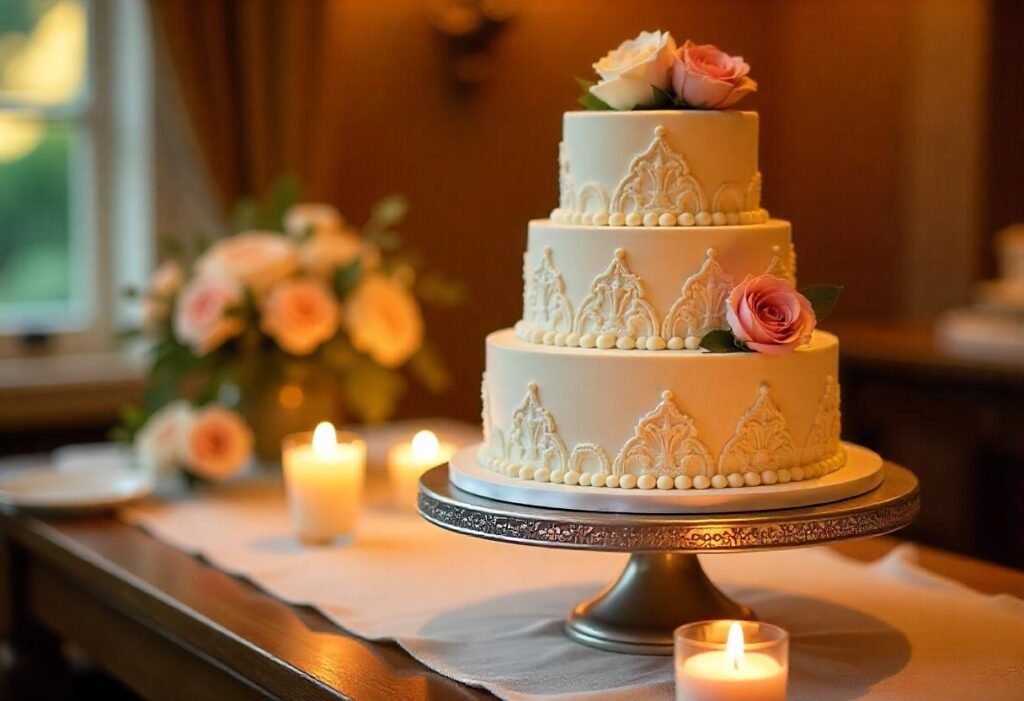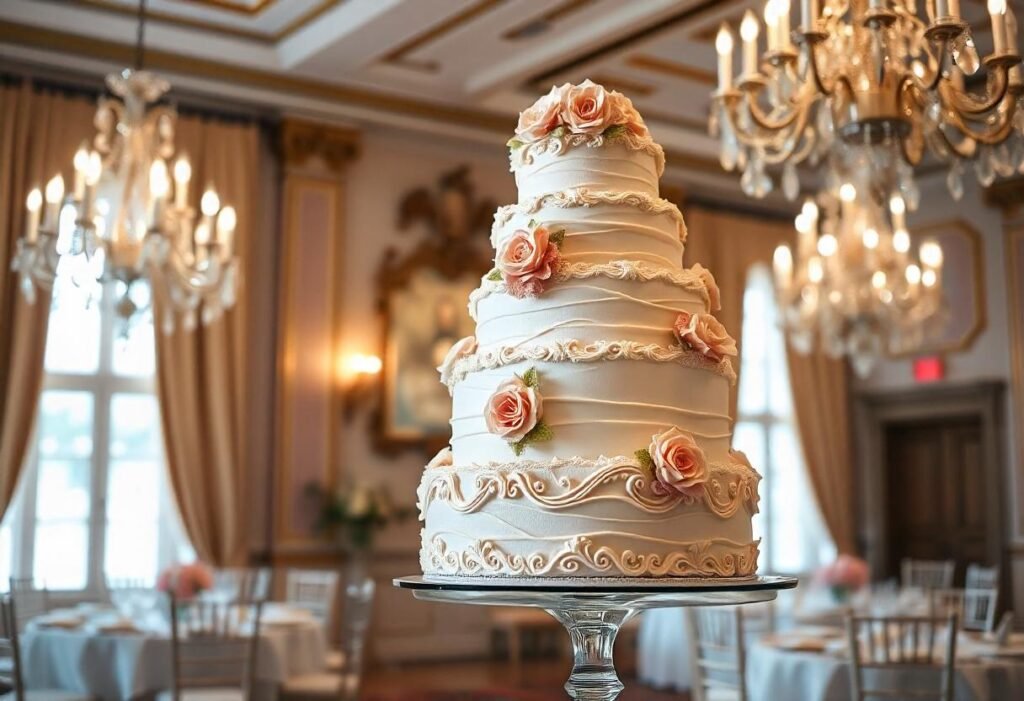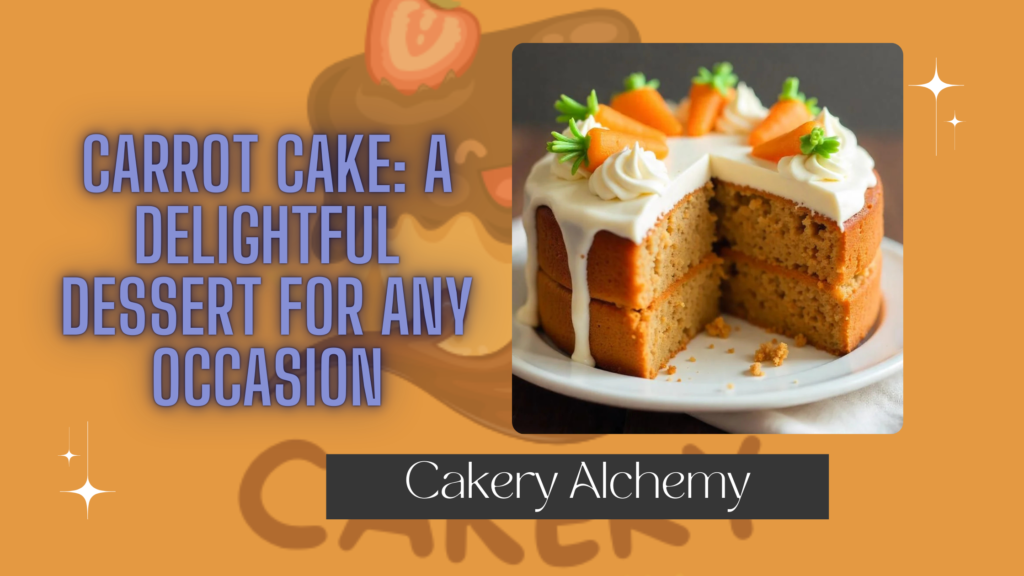Table of Contents
Introduction

A marriage cake is not only a saccharine dish that is served after the wedding, but a lot of love, unity, and happiness as well. It is not only the syrupy treat that has become a matchless part of the wedding ethos but lies at the very core of the ceremony as a sweet treat to be looked at as well as to be tasted. Here, you’ll find step-by-phase orders on how to bake a traditional wedding cake, instructions on picking the right flavors for your marriage cake, and a few useful opinions on how to properly frost and decorate your wedding cake and most prominently, how to transference and assemble your masterpiece at the nuptial venue.
The Significance of a Wedding Cake
The concept of the wedding cake is centuries old, having evolved from a loaf of bread that a bride would have placed on her head in the Roman Empire. Presently, wedding cakes are no longer simple delights that are placed at the reception but they are typically large multi-tier creation that represents a sweet start of the newlyweds’ life. Another popular tradition is cake cutting which is considered as the first task of the couple seen performing at the reception.
They also have a practical need for the event celebration apart from the symbolisms that the wedding cakes hold. It is on these that the dessert is served; they have to depict the theme and the nature of the wedding. Classic and more artistic sculpted wedding cakes symbolize the preferences and the general atmosphere of the marriage ceremony chosen by a couple.
Choosing the Right Flavors for Your Wedding Cake
- Consider the Season: The time of the year in which your wedding takes place may be used when choosing a flavor. For instance, there is citrus like lemon, raspberry, or vanilla as such flavors are loved during spring or summer weddings while therareis chocolate, caramel, or spice flavors which are appropriate during fall or winter weddings.
- Balance Tradition and Creativity: Simple and basic reliable flavors like vanilla, chocolate, and almond which are traditionally used in a wedding cake. But do not be overly traditional, there must be some modernity somewhere too. Among the frequently used modern ones, one can distinguish chemically caramelized plain and salted caramel, red velvet, and green match.
- Multiple Layers, multiple in each tier. This in a way enables you to meet the needs of as many visitors as possible and guarantee they have several choices to go by. For instance, you male Flavors: If you choose to have a multi-tiered cake, then you can serve different types of fy decide to use vanilla bean as the base flavor and lemon as the middle flavor without forgetting chocolate as the top flavor.
- Fillings and Frostings: This is fine to say about the cake, but more importantly, the fillings and frostings of the cake. When choosing appropriate fillings to go with your cake layers, you can use buttercream, ganache, fruit preserves, or pastry cream. The first category includes simple buttercream or whipped cream that provides the icing with a mild taste of sweetness while the second type of fillings tastes even stronger, like raspberry, lemon curd, or salted caramel.
- Tastings Are Key: However, do not go by the photos or description alone, arrange for a tasting session with your baker. Personal taste various elements of flavors, fillings, and frosting to come up with a proper combination to apply to the cake. It also serves the purpose of making sure that the various flavors of the cake are complementary to the kind of wedding you are going to have.
Step-by-Step Instructions for Baking the Layers
Ingredients:
- 4 ½ cups of cake flour
- 1 tbsp of baking powder
- 1 tsp of salt
- 2 cups unsalted butter, softened
- 3 cups granulated sugar
- 8 large eggs, room temperature
- 2 tbsp vanilla extract
- 1 ½ cups of whole milk
Instructions:
- Preheat the Oven: Your oven should be pre-heated to 350F or 175C and you need to grease the cake pans and put parchment paper at the nethermost of each pan. For a multi-tiered cake, you shall require, unlike sizes of pans for each tier for instance 12 12-inch, 9-inch, es, and 6-inch saucepans.
- Mix Dry Ingredients: To the bowl, augment together the cube flour, baking powder, and salt and mix until you get a plane mixture.
- Cream the Butter and Sugar: In a large mixing boule combine the butter and sugar Beat them until they become light and fluffy for at least five minutes. This is central as it helps create a tender and airy cube.
- Add Eggs: Add the eggs one at a stint, and, for every egg that has been situated added, mix until you get a smooth batter. It is also appropriate to show that the eggs ought to be engaged from the fridge and left at room temperature to mix well with the cover.
- Incorporate Vanilla: Improve the vanilla citation for the basic flavor to enhance the cake.
- Alternate Dry Ingredients and Milk: Gradually combine the dry ingredients with the butter mixture in separate three additions while mixing consecutively with milk. The first and last part should be dough and dry components. Combine these parts gently enough to ensure that they are lone blended, but not crushed up.
- Bake the Layers: It with the batter and bake in the set cake pans for 25 to 35 minutes or till the cake picked introduced in the center comes out clean. The blazing time is affected by the size of the pan secondhand so it is recommended to use a given size of the pan.
- Cool the Cakes: Cool the cakes in their pans for 10 mins then eradicate them in a wire rack then let them cool to room disease.
- Level the Layers: After the cakes have cooled, you necessity to freeze the lumps for relaxed slicing of top of apiece bar to make them flat. This makes it likely for your levels to be stacked in the right manner so that they do not bear a resemblance to a pyramid.
Frosting and Decorating Techniques
Ingredients for Buttercream Frosting:
- 4 cups unsalted butter, softened
- 8 cups powdered sugar
- 1 tbsp vanilla extract
- 6 tbsp heavy cream
Instructions:
- Make the Buttercream: In a large bowl sift the butter and beat this on high until the mixture is creamy and of light color. Slowly incorporate the powdered sugar into the mixture making sure that the speed on the mixer is low. Once incorporated, beat on medium-high speed and add the vanilla extract and heavy cream. Beat until light and fluffy.
- Smooth Frosting: Once the first and thin layer of buttercream, known as the crumb coat, has dried up, spread another layer of the buttercream or the second and the thick layer using an offset spatula. To level the frosting apply a bench scraper on the side of the cake while spinning the cake stand.
- Add Decorative Details: If you are to adhere to the theme you may keep the cake plain or elaborate it to look like the wedding theme. Popular techniques include:
- Piping: Using a piping bag with different nozzles you may pipe rosettes, laces, or dots.
- Fresh Flowers: Placing fresh or edible flowers around the cake increases the elegance of the birthday cake. Employ flowers that have no chemicals or pesticides used in their preparation.
- Fondant: As a way of proffering a professional look on your cake, it is advisable to cover it with fondant. This involves spreading out the fondant and covering the cake with it and after that leveling the fondant by using fondant smoothers.
Tips for Transporting and Assembling the Cake at the Venue

- Transport in Tiers: If that is possible transport each tier in different containers and assemble the cake at the venue. This is advantageous because it lowers the chances of the merchandise suffering some sort of damage during the transportation process.
- Use Dowels for Stability: While placing them one over the other, it is customary to place wooden or plastic spacers in the bottom tiers to enable support. This makes sure that the higher ranks do not fall to the lower ranks level or standard.
- Secure in the Vehicle: Put each cake box on a flat part of your car and make sure it does not move throughout the drive. Quite several bakers place the boxes on nonslip mats to prevent them from moving around.
- Assemble on Site: At this place, place the tiers one over the other neatly placing each tier properly on the other. Also if the cake has a fragile topper that can easily be knocked off when moving the cake, it should be placed in the cake last to avoid damaging it.
Conclusion
Baking a classic wedding cake is both an art in addition a science, combining precision with creativity. From selecting meaningful flavors that represent the twosome’s tastes to mastering the step-by-step baking and adorning process, creating the perfect wedding block takes time, skill, and care to detail. The wedding cake is not impartial a dessert; it’s a symbol of unity and celebration, central to the bridal day. With careful planning, thoughtful enterprise, and proper conveyance techniques, you can generate a stunning flagship that will be remembered by the couple and their guests for years to come. Whether you’re a specialized baker or someone taking on the test for a loved one, the key is to stay organized, practice tolerance, and embrace the process of generating something attractive.
For more info: Click Here.
FAQ’s
How far in advance can I bake my wedding cake?
Wedding cakes have to be fresh and as a result, they can be baked a week earlier but have to be stored well to maintain their freshness. After frosting, place each cake layer on a plate, cover with a plastic film, and transfer in the icebox for a couple of hours or until hard then cover the layers individually with the malleable wrap and leave in the freezer. These cakes also need to be thawed in the refrigerator a day before the process of adorning them.
Could I make the frosting ahead of time?
Yes! The buttercream frosting can be equipped a week in advance and refrigerated. Depending on the type of cake, it is then left to come to room temperature and then whipped again already smearing.
What’s the best way to store leftover wedding cake?
Fondant can be tricky for beginners. If you’ve not once worked with it, practice on a small cake first or deliberately hire a specialist to cover the bar in fondant.

